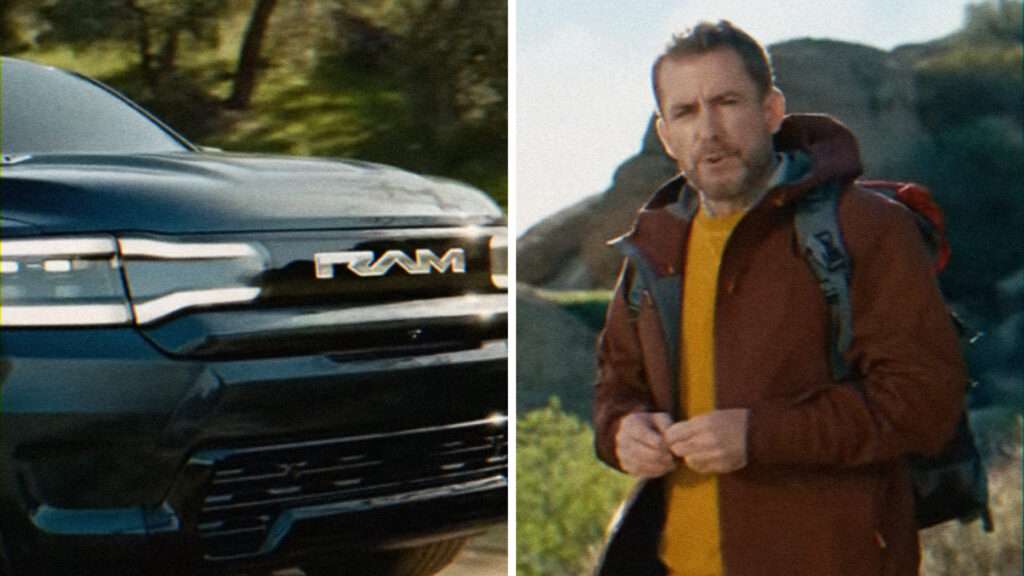More than 100 million people watch the Super Bowl each year, more than any other single broadcast. Commercials that run during games command high prices: During this week’s Super Bowl, a 30-second ad cost between $6 million and $7 million.
A 60-second spot titled “Premature Electrification” humorously addressed concerns about how far electric vehicles (EVs) can go between charges. In a parody of a pharmaceutical ad, actor Jason Jones talks to viewers worried about being “disappointed” by an EV if it “can’t last as long as you want it to.” The solution: a Ram 1500 REV pickup truck, built by Big Three automaker Stellantis (formerly Fiat Chrysler).
An all-electric version of the 40-year-old Ram won’t be available until late next year, but it boasts a 500-mile range between charges, which is currently unheard of for a truck. Its closest competitors, Rivian’s R1T and Ford’s F-150 Lightning, can each go about 320 miles on a single charge.
It makes perfect sense for Stellantis, a company with a market cap currently worth more than $50 billion, to spend millions promoting its upcoming entry into the high-tech electric vehicle market. What doesn’t make sense is that some of these trucks will likely be built with substantial help from taxpayers.
In May 2022, the company announced a $2.5 billion joint development agreement with Samsung SDI that would see the companies build an EV battery manufacturing facility in Kokomo, Indiana. The factory, which is expected to begin production in early 2025, will “provide battery modules for various vehicles produced at Stellantis’ North American assembly center.”
On the same day, the Indiana Economic Development Corporation (IEDC), a state development agency chaired by Governor Eric Holcomb, committed to state incentives totaling more than $186 million in grants, tax credits and site preparation. The city and county have proposed a 100% property tax abatement of up to $1.175 billion over 20 years.
The incentives appear to make Indiana a more attractive location than Michigan, which a Stellantis executive said was “in play” earlier that same month.
While $186 million is a lot of money, it’s $2.5 billion committed to Stellantis and Samsung projects, and that could grow to more than $3 billion over time. This pales in comparison to the €48.134 billion ($51.584 billion USD) that Stellantis reported in June 2022 cash on hand. For comparison, Indiana’s total state spending in fiscal year 2021 adds up to $44.7 billion.
Unfortunately, it’s all too common for billion-dollar automakers to offer taxpayer money. In October, Governor Mike DeWine announced that Ohio would invest $150 million toward a $4 billion Honda investment in EV factories. Last year, the state of Georgia committed $1.5 billion in state incentives for a Rivian plant while the company had $16 billion in cash.

